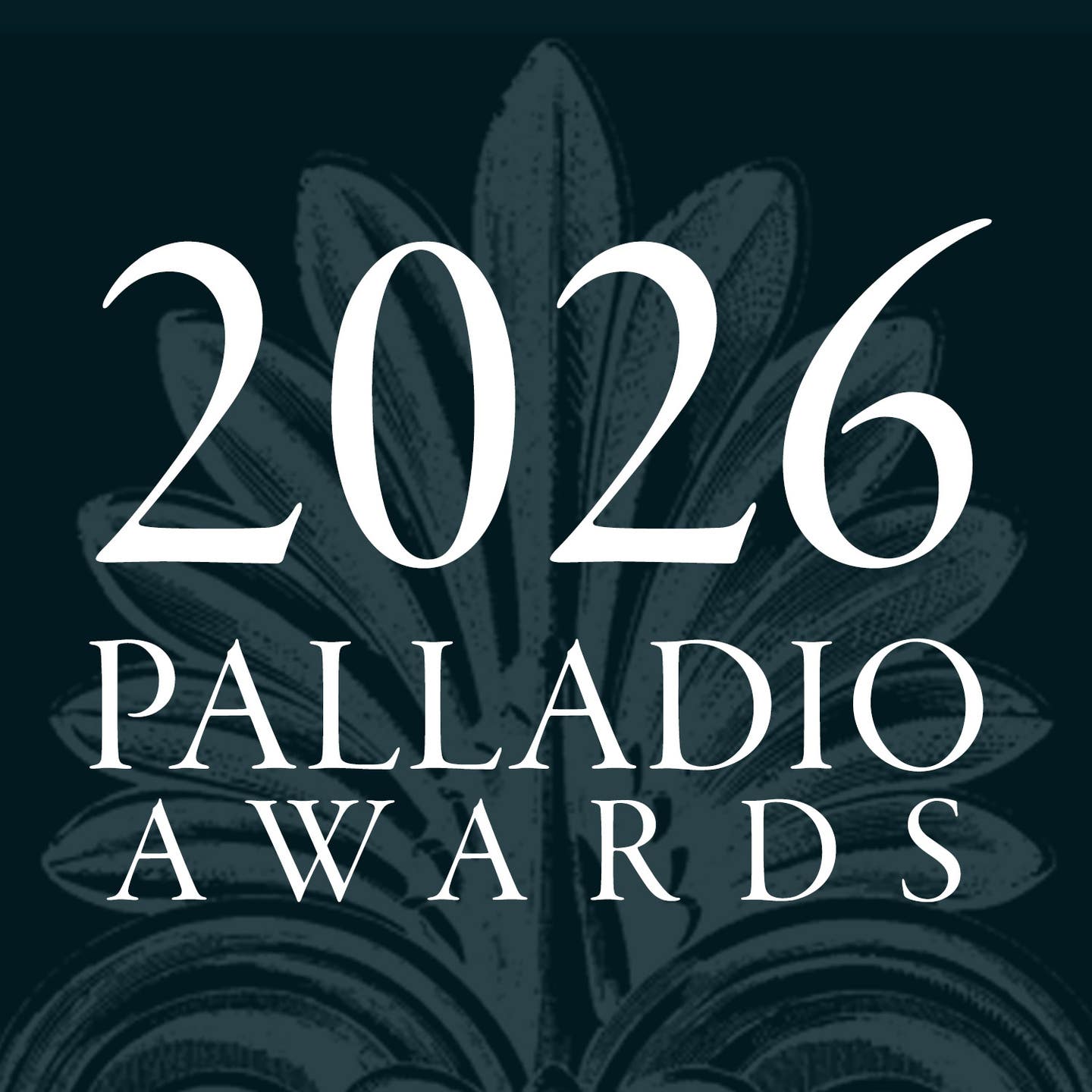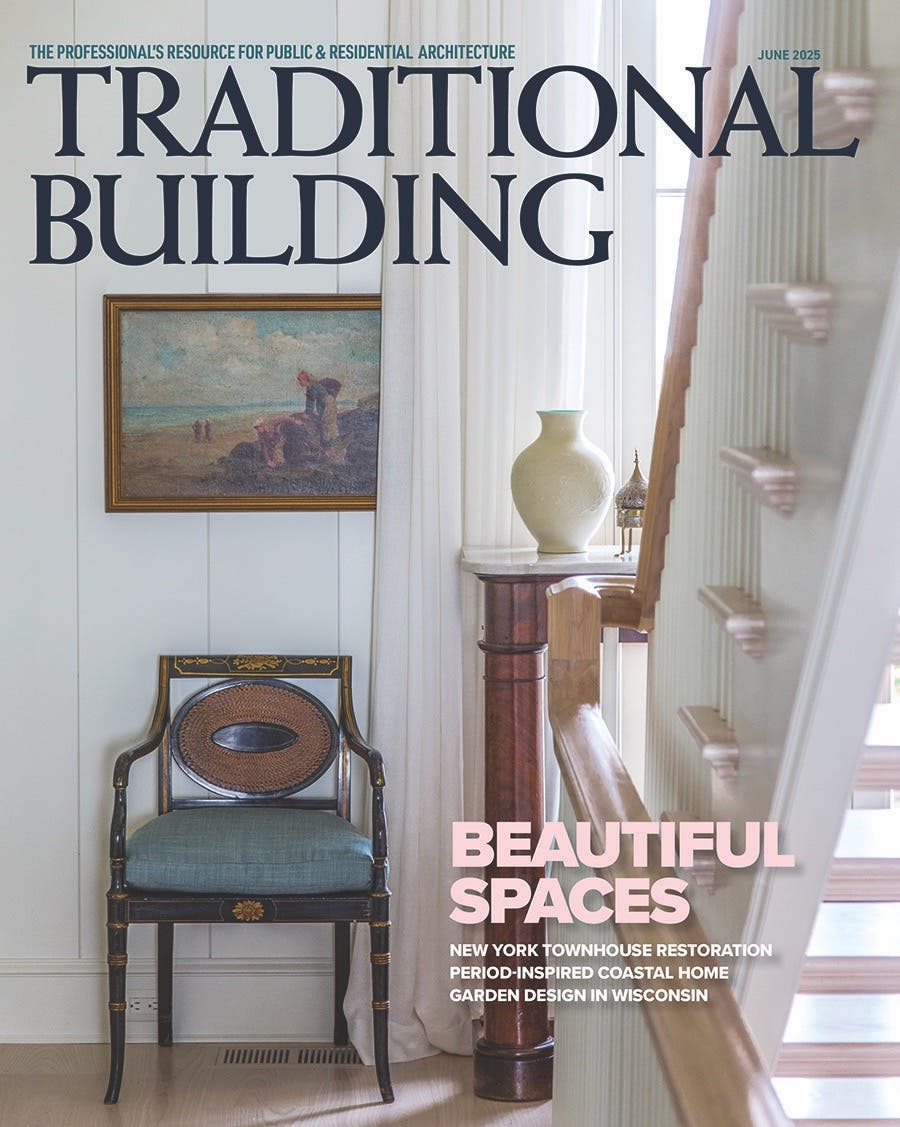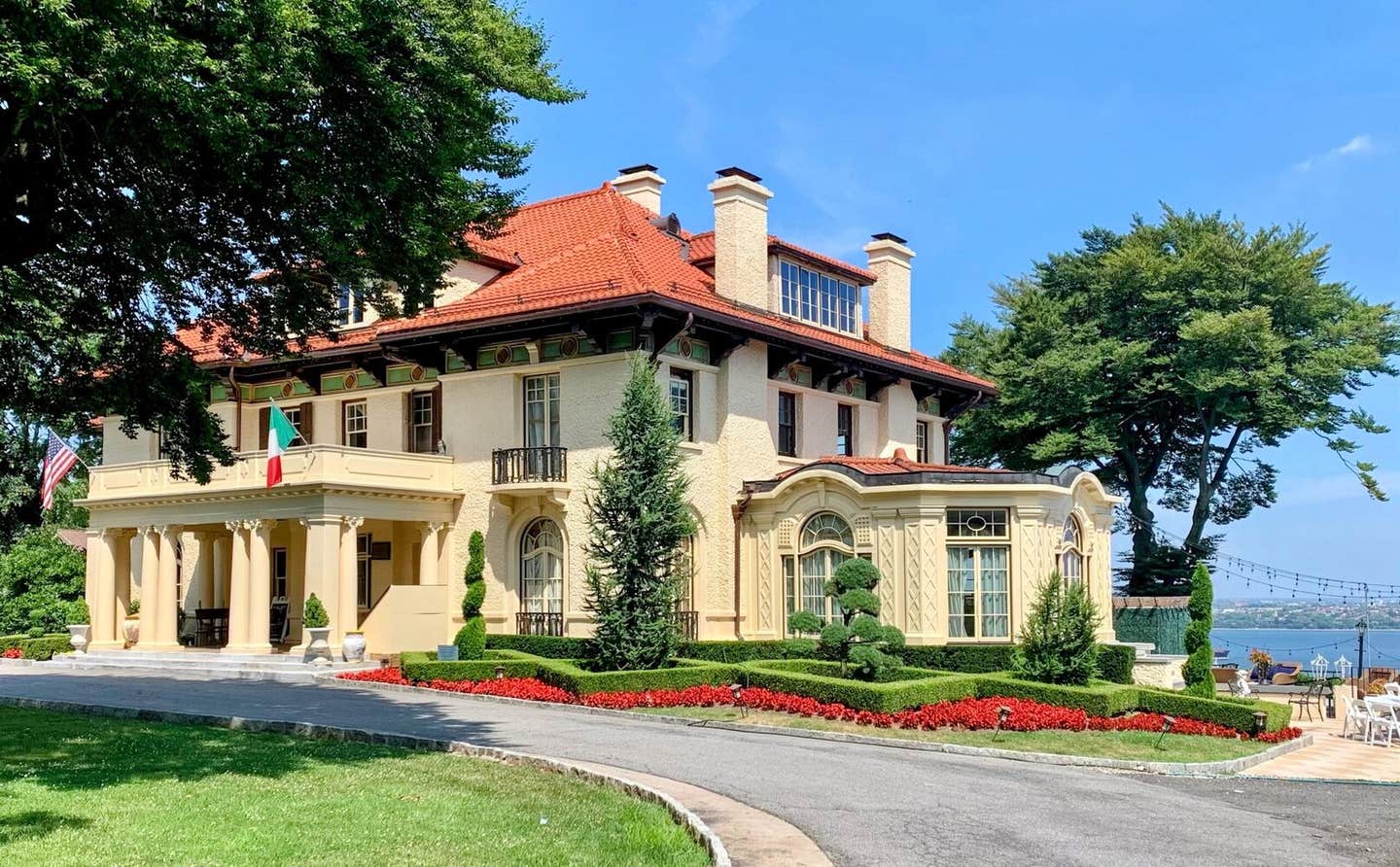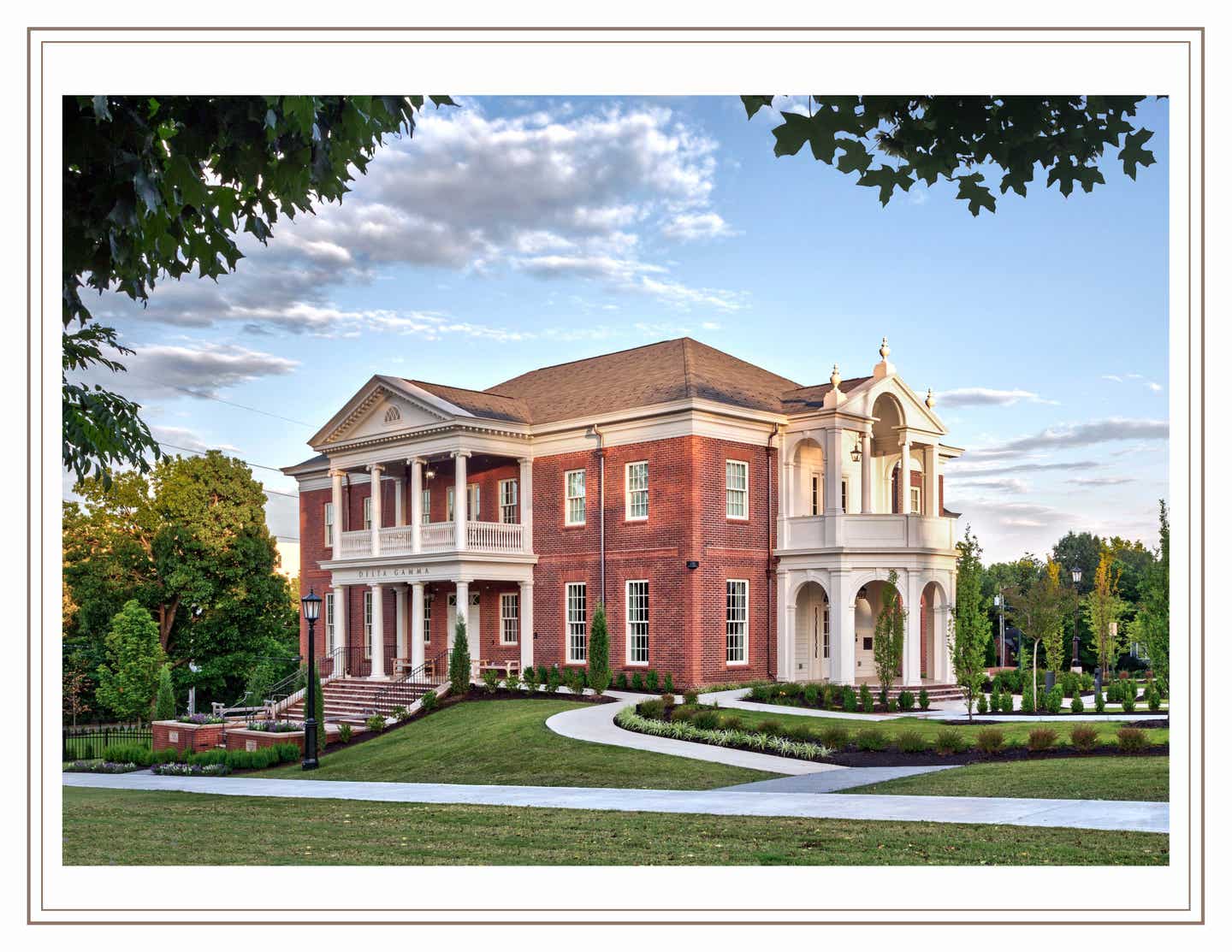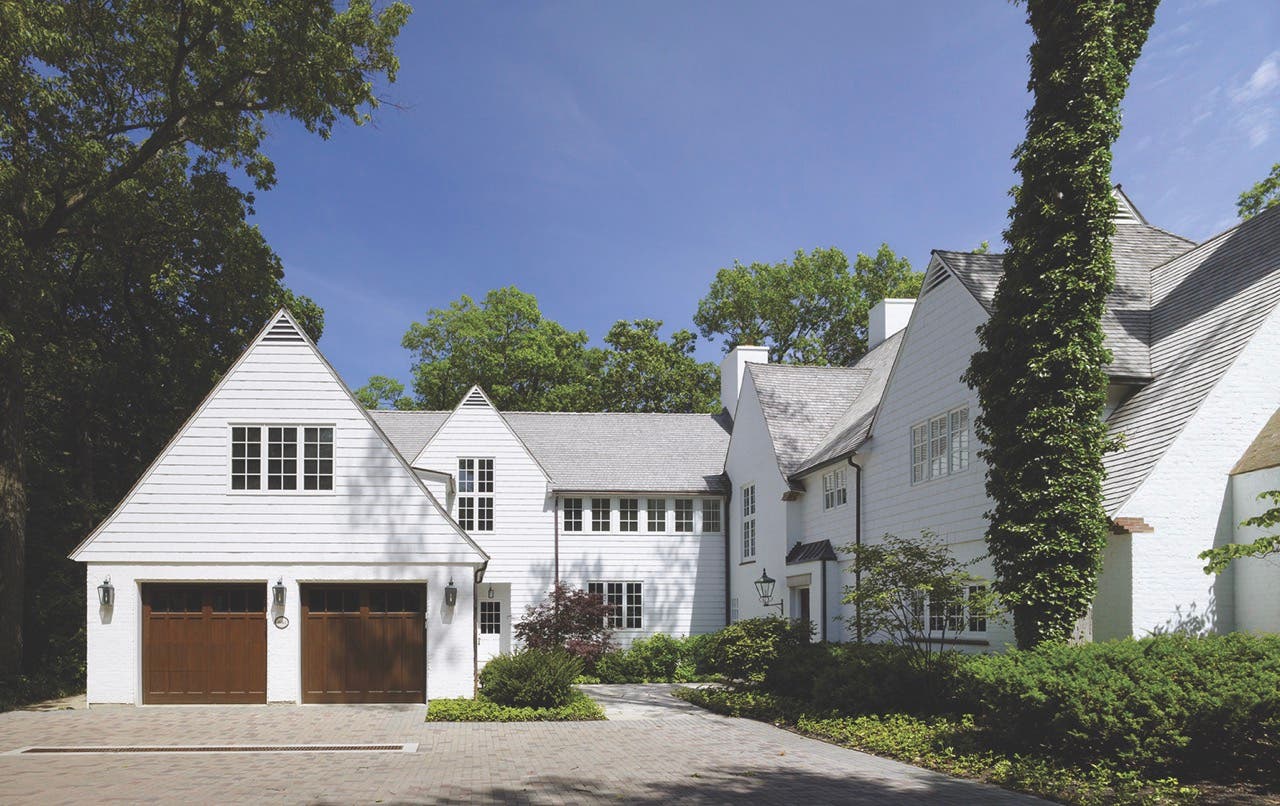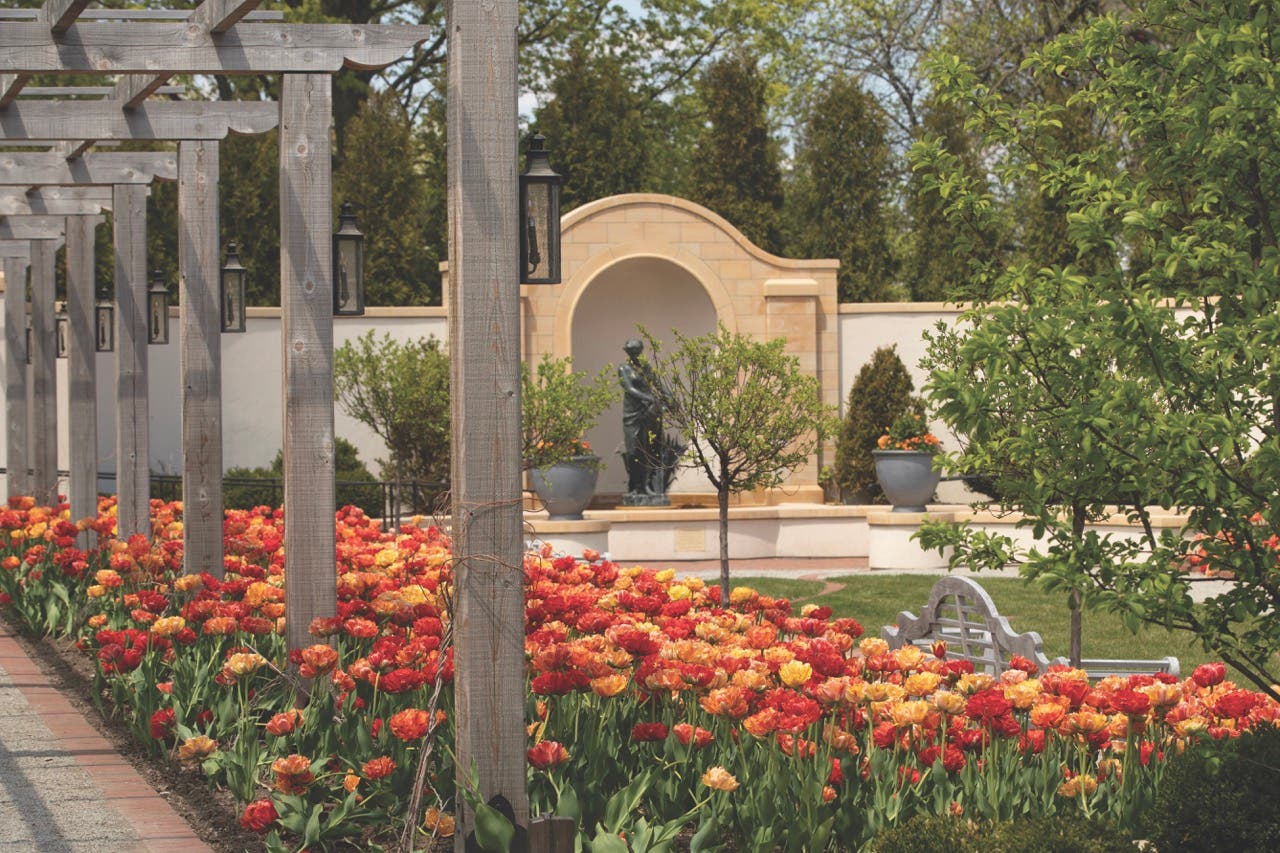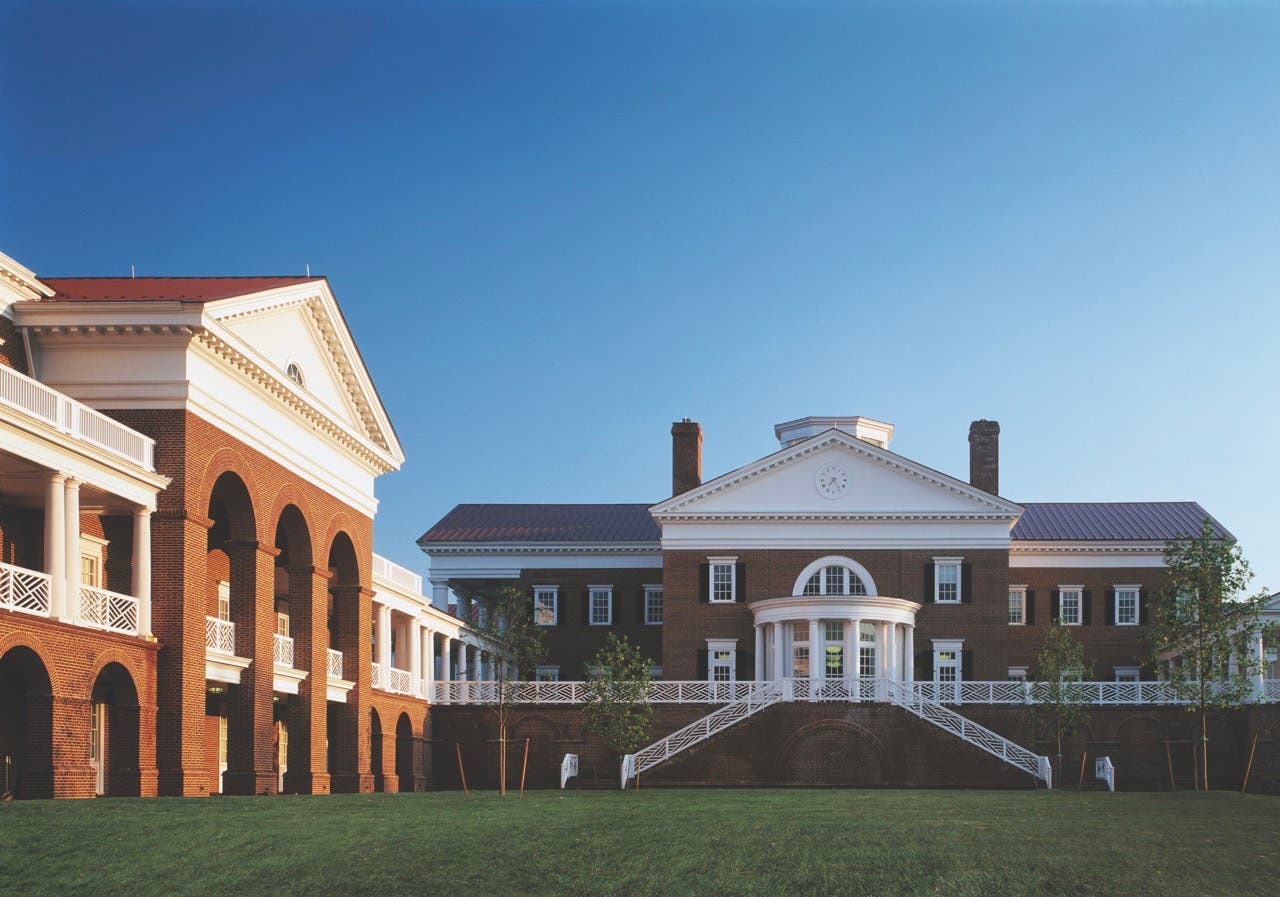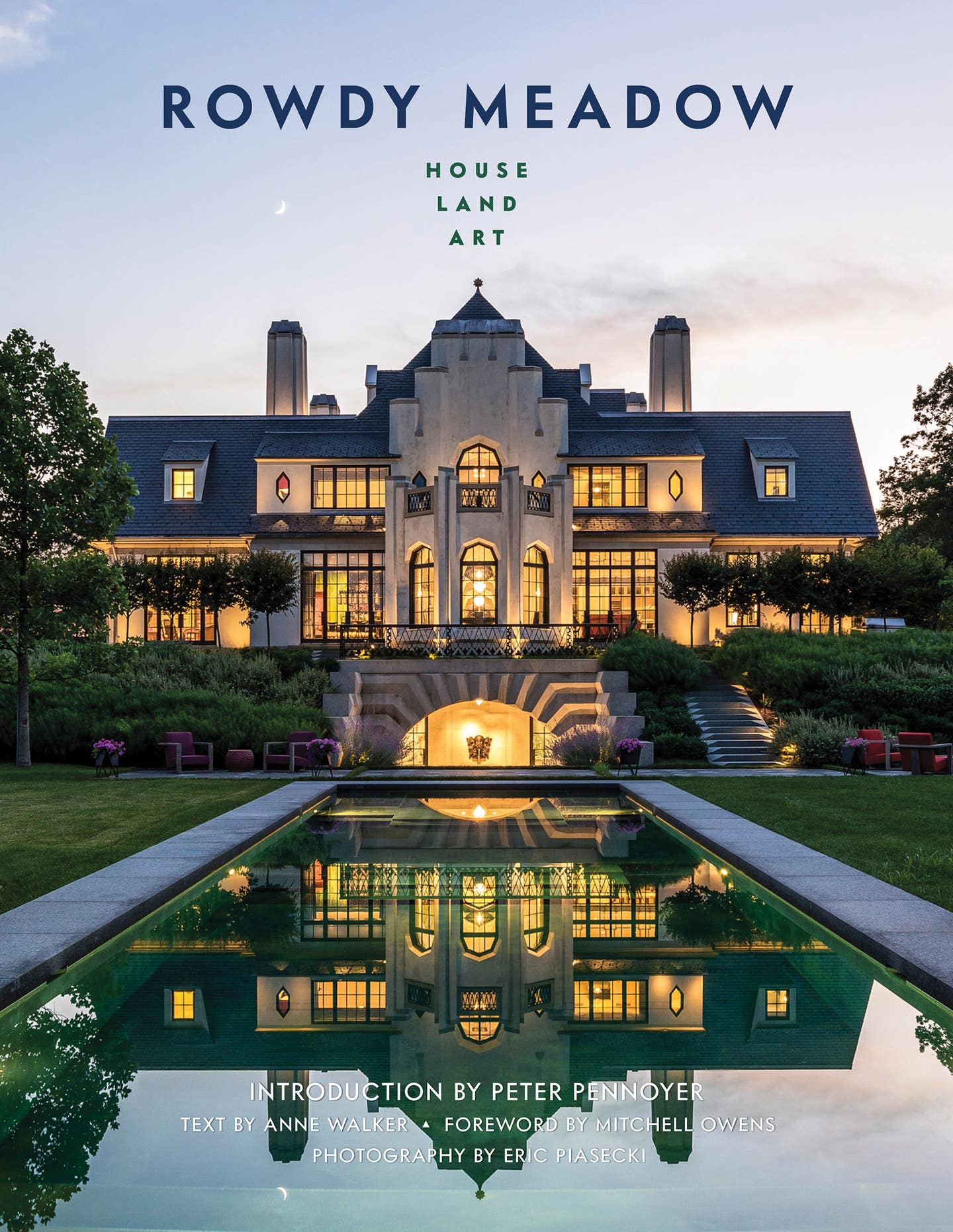
Features
Rowdy Meadow: House-Land-Art | Book Review
Books and products mentioned in TradionalBuilding.com are chosen by our editors. When you buy through links on this site, we may earn an affiliate commission.
Rowdy Meadow: House-Land-Art by Peter Pennoyer and Anne Walker
Published by Vendome 2021
303 pages; color
Hard to communicate my surprise and awe when, on a 1980s architecture-and-beer-drinking expedition to Iron Curtain Prague, I turned a corner behind the Baroque buildings of famous Wenceslas Square to face a clutch of avant-garde structures now known as Czech Cubism. My astonishment can only be matched, in a way, by reading Rowdy Meadow, the new book by architect Peter Pennoyer and historian Anne Walker that draws on the same kaleidoscopic style for a remarkable American house of the same name.
After a string of informative “The Architecture of” coffee table tomes on favorite, underappreciated architects of the last century (Delano & Aldrich, Warren and Wetmore, Grosvenor Atterbury), Rowdy Meadow returns to a look at Peter Pennoyer Architects’ own work. This book, however, is no sales pitch for an office esteemed for neo-traditional Virginia estates and New York City townhouses. Instead, we find the architect striking out into new, international turf with a commission for an art collector and industrialist passionate about progressive, early 20th century design, from the Arts & Crafts movement of England to the experiments of Mitteleuropa and Czechoslovakia.
All of which begs the question, What is Czech Cubism? As Pennoyer notes in a background chapter (alone worth reading), the label is technically a misnomer. Little known beyond its borders as late as the 1990s—and not much more within—Czech Cubism has come out of the shadows to be something of a darling of early modern design. Blossoming just before World War I, it must be understood in the milieu of designers searching for an original, national style that pushed visual interest but avoided ornament and historical references. Czech architects of the day not only inherited a long-running Bohemian antipathy to classicism (which smacked of papal Rome), but also balked at the industrial simplification of Modernism then taking root. Their alternative was an architecture based not on curves or right angles but, as Pennoyer explains, “triangles, crystalline shapes, and oblique angles.” One suspects if these designers were around today, they’d be into fractals. (Perhaps they already were.)
As a finished house, Rowdy Meadow is not a pure play in Czech Cubism but more eclectic, with “traces of styles from Arts & Crafts to German Expressionism” according to the architect. Indeed, just browsing the prolific color photos, the keen eye will also spy influences from Edwardian roof massing to Art Deco decorative motifs. This is understandable, though, in light of an idiom that flourished for under a decade and produced a mere handful of built examples.
What is evident, however, is a fluent, masterful integration of often disparate inspirations in a single, very large, residential commission. You don’t have to be an architect, or even interested in houses, to feast on the creativity of Czech Cubism or what it aspired to: another way of looking at buildings. As I sip my Pilsner Urquell beer, it occurs to me that we may be ready again for such inventiveness, and that the Czechs—and in their hands, Mr. Pennoyer—are onto something.
Gordon H. Bock is an architectural historian, instructor with the National Preservation Institute, and speaker through www.gordonbock.com.

